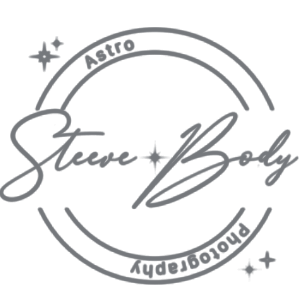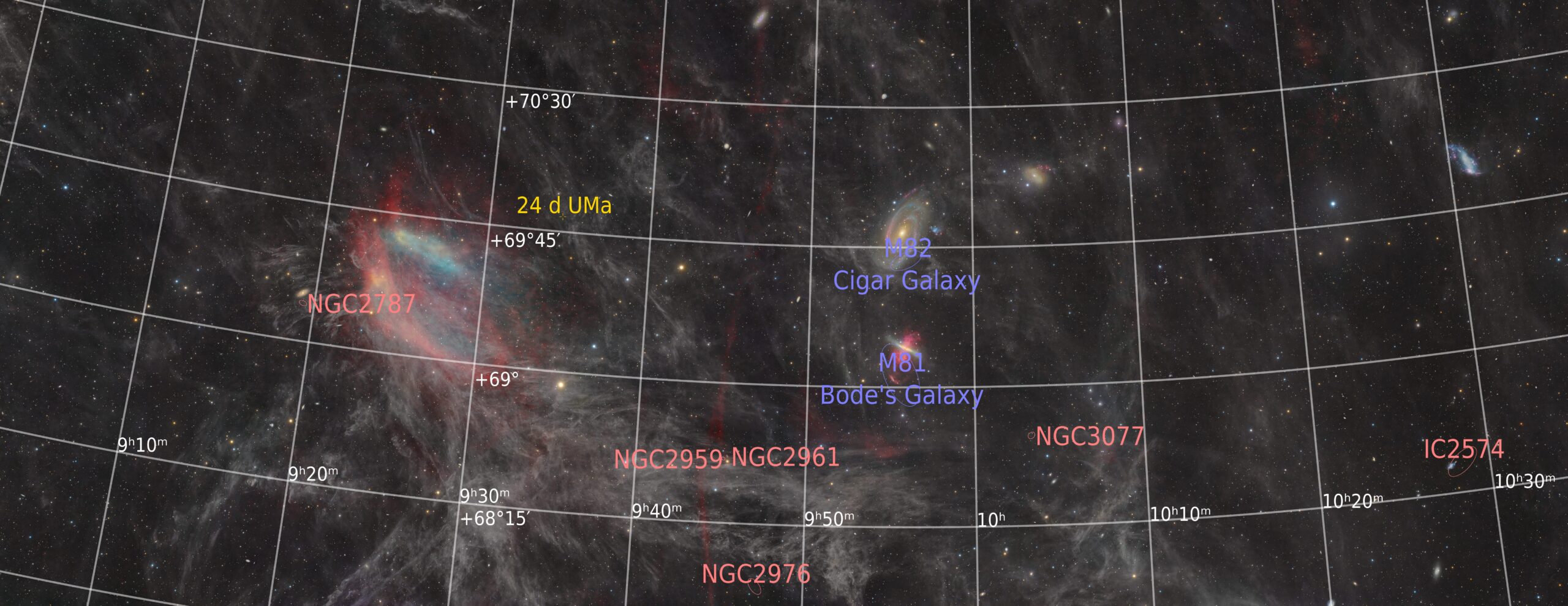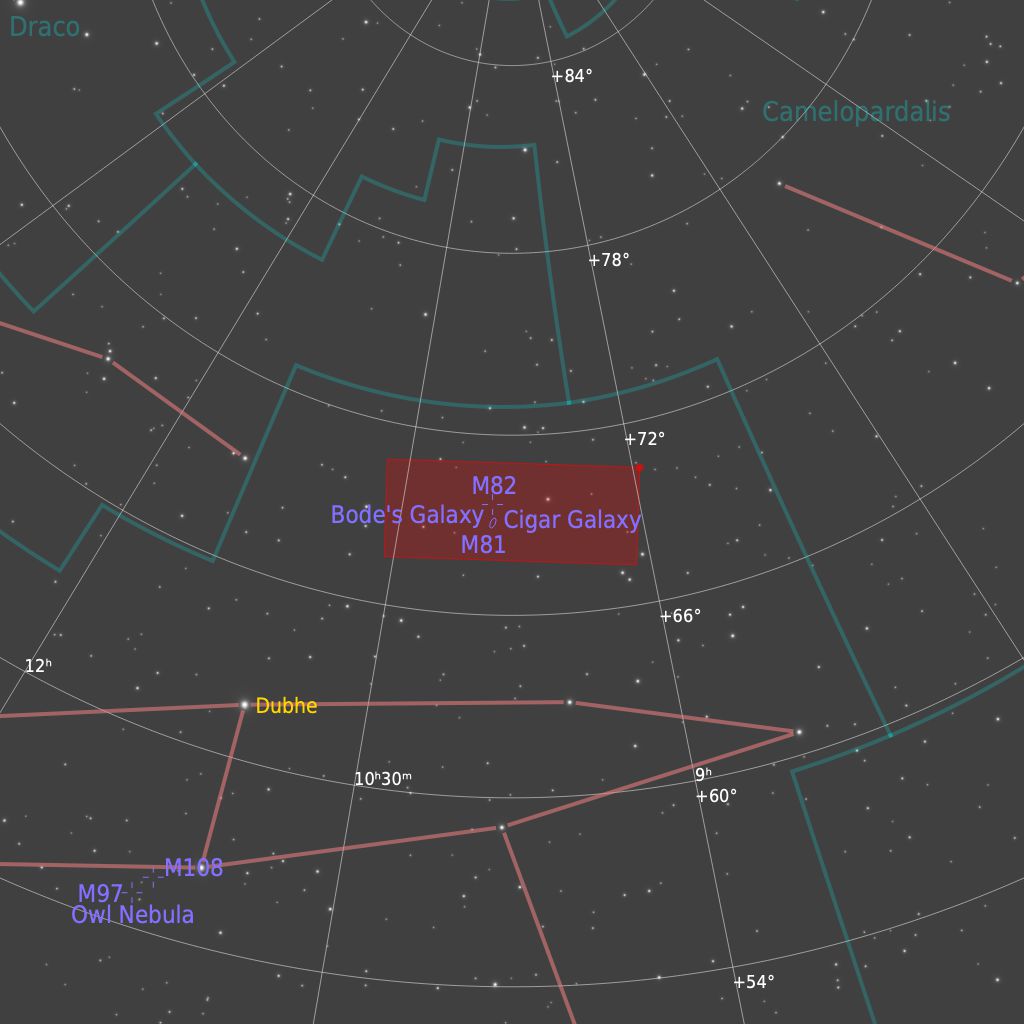I’m delighted to share this collaborative image of the Vulcan Nebula (WPS46), a project that truly highlights my team’s passion for pushing the boundaries of astrophotography. We first noticed WPS46 during a large-scale survey campaign at SRO, where we used a Rokinon 135mm lens and a dual narrowband filter to search for extensive OIII structures linked to the Ursa Major SNR. Although many parts of the sky seemed promising, our only strong signal appeared in the region near the well-known galaxies M81 and M82.
Seeing a faint blue-green hue after so many surveys was an exciting moment. At first, we suspected it might be an HII or ISM region rather than the SNR we were looking for, but we decided to go deeper to capture this intriguing nebula alongside M81 and M82. Further research showed that this nebula has been documented in the WHAM survey of H-alpha enhancements at high galactic latitudes, and several recent Astrobin images also capture it.
Its central ionising star, TYC 4376-968-1, is neither a hot dwarf nor a hot sub-dwarf, adding to the mystery of what exactly WPS46 might be. When I reviewed deeper FSQ106 data, I was surprised to see a massive H-alpha filament crossing the field—part of the Ursa Major SNR that we had initially hoped to find.
A Collaborative Achievement
This project was a true team effort, combining data from multiple telescope systems for both widefield and close-up views:
• FSQ106 Widefield Systems: Operated by Patrick Sparkman and Tarun Kottary to capture the broader frames.
• DR350: Used by Curtis Morgan and Bray Falls for detailed shots of the nebula.
• Coordinated Framing: Tim Schaeffer carefully planned the data collection strategy, ensuring all our fields aligned seamlessly.
• Image Processing: I (Steeve Body) processed the widefield mosaic shared here, while Bray Falls processed the close-up images of the Vulcan Nebula.
There is so much to see in these images—beyond the Vulcan Nebula, you’ll find complex IFN (Integrated Flux Nebula), the starburst galaxies M81 and M82, extensive features from the Ursa Major SNR, and numerous smaller background galaxies.
Visit and Explore
A special thanks to the entire team for their tireless efforts. In particular, I’d like to recognise Tim Schaeffer for his outstanding coordination and Bray Falls for his work on the close-up processing. I hope you enjoy this image as much as we enjoyed creating it. Clear skies and happy exploring!


